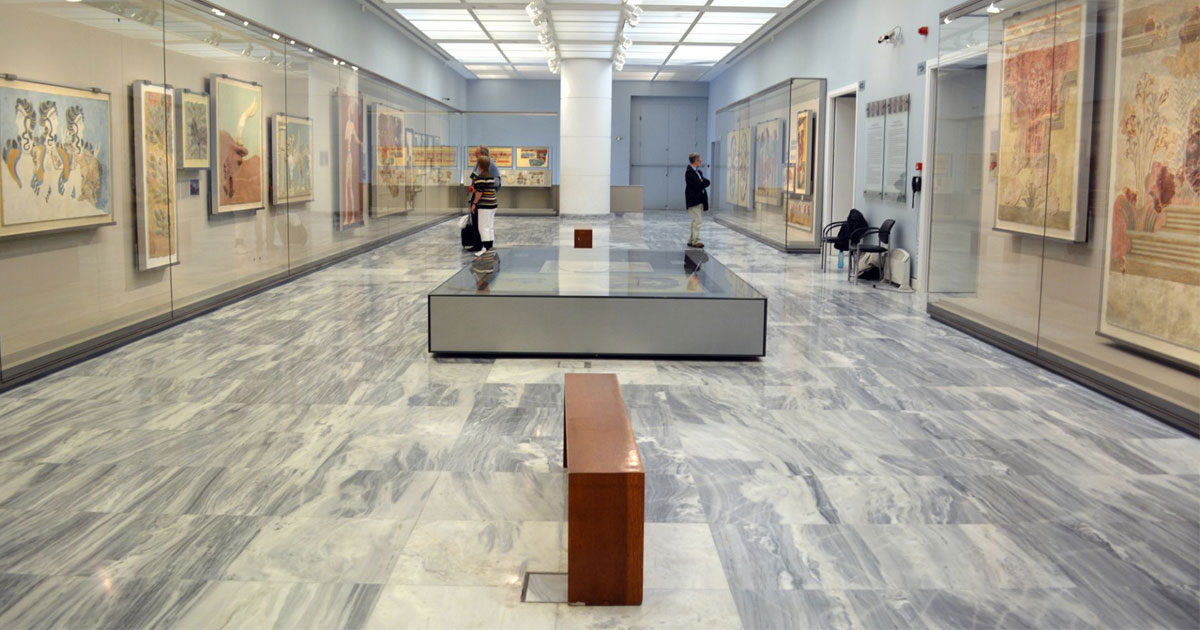Archaeological Museum of Heraklion
Its exhibits include representative specimens from all periods of Cretan prehistory and history, covering approximately 5,500 years, from the Neolithic era to Roman times. The unique masterpieces of Minoan art occupy a dominant position in its collections. The collection of Minoan antiquities is the most important in the world and the museum is considered the museum par excellence of Minoan civilization.
The first archaeological collection in Heraklion was created in 1883. In 1900 it was housed in two rooms in the courtyard of the cathedral of Agios Minas. With the beginning of major excavations in Crete, it included the first significant finds, while at the same time it was ceded to the Cretan State.
In 1904-1907, the first museum hall was constructed, while in 1908, after the addition of a second hall, the antiquities were transferred there.
The current building was started in 1937 based on designs by Patroklos Karantinos.
In 1979, 35,000 Heraklion residents protested against the export of antiquities from the Archaeological Museum as part of cultural exchanges. Ultimately, the government backed down and the plans were not implemented.
From November 2006 to early 2014, the Museum was closed to the public due to renovation work inside. A small temporary exhibition with the most important exhibits of the Museum could be seen in a special room that has been set up on the north side of the Museum. Since March 2014, the renovated museum is now fully open to the public and more impressive than ever.




